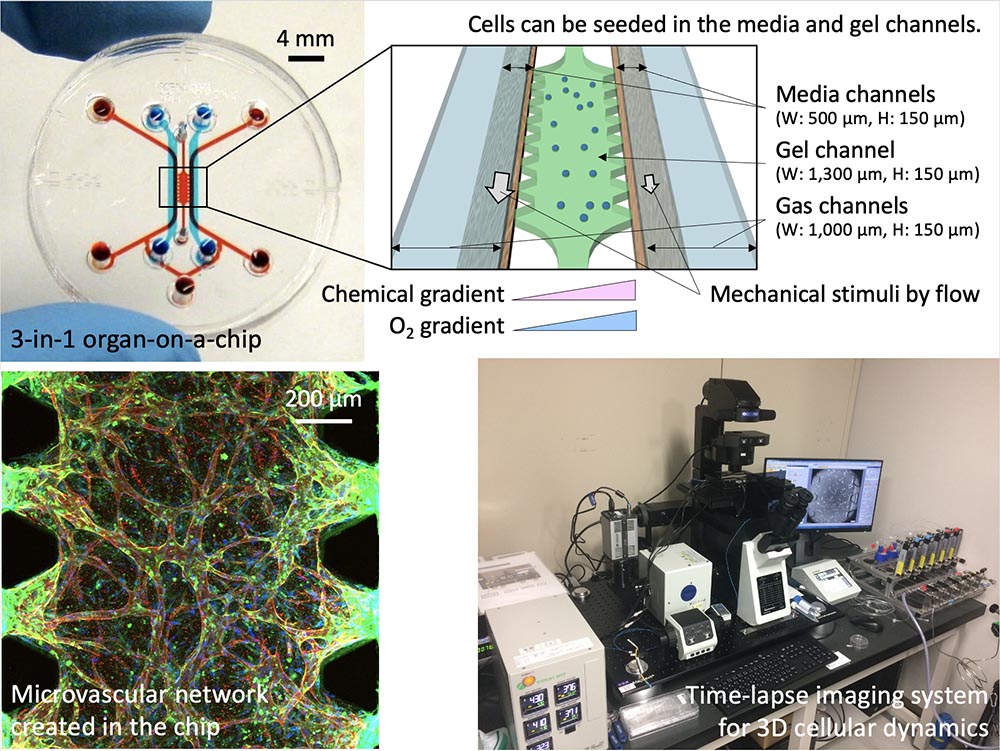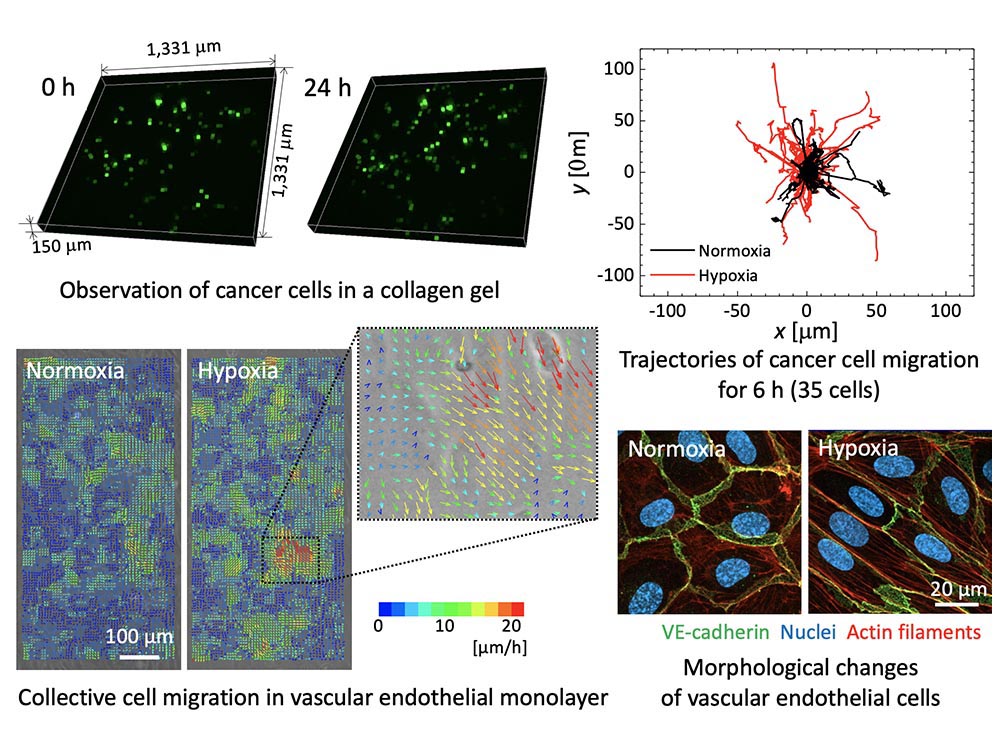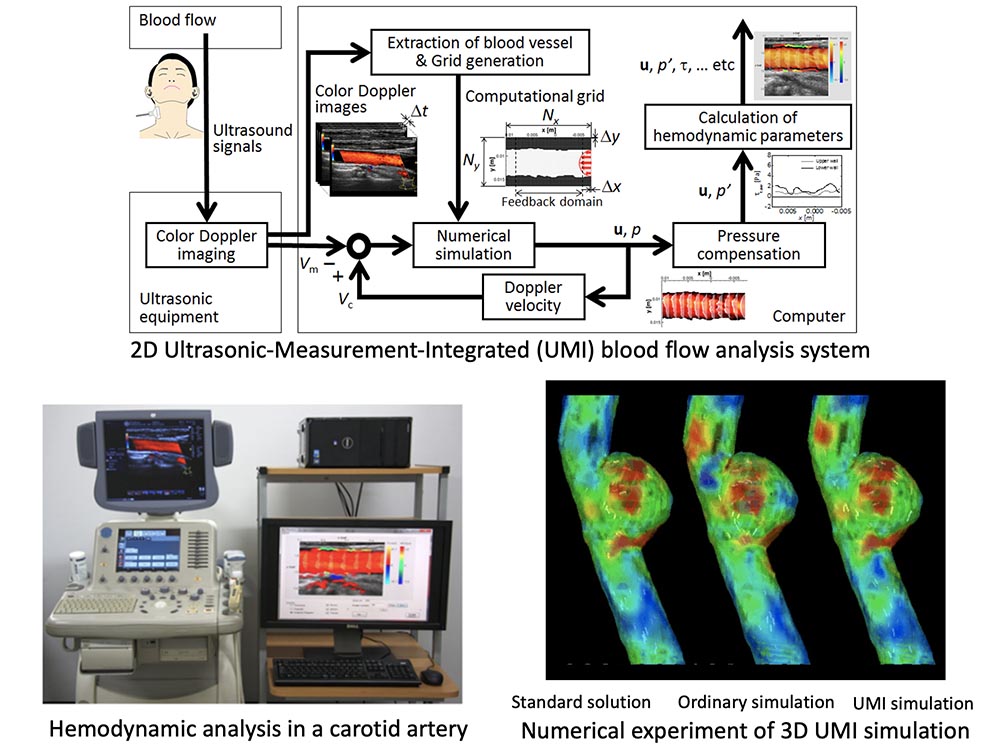Creative Flow Research Division
Integrated Simulation Biomedical Engineering Laboratory
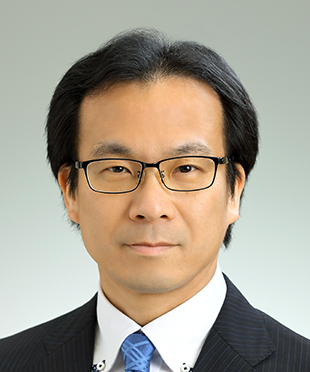
Concurrent ProfessorMakoto Ohta
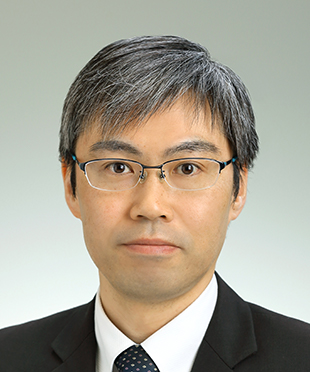
Associate ProfessorKenichi Funamoto
For technical innovation of treatment and prevention for diseases, it is essential to elucidate mechanisms for homeostasis and in vivo phenomena related to development and progression of the diseases. We perform interdisciplinary research based on fluid engineering, integrating biomedical engineering and cell biology. Changes of an individual cell response, cell—cell and cell—extracellular matrix interactions, and tissues are investigated by reproducing in vivo microenvironments with microfluidic devices “organ-on-chips” and measurement-integrated simulation.
Reproduction of in vivo microenvironments using microfluidic devices
Cells respond to mechanical stimuli caused by motion and blood flow and chemical stimuli by chemicals, and failures of such cellular functions possibly result in diseases or damages. In order to reproduce physiological and pathological in vivo microenvironments, we develop “3-in-1 organ-on-a-chip” which simultaneously controls oxygen tension and mechanical and chemical stimuli to cultured cells. The chip contributes to elucidation of phenomena in in vivo microenvironment, and is useful as a platform for drug discovery for diseases.
Elucidation and control of cellular responses to hypoxic stresses
An in vivo oxygen tension is lower than the atmospheric one and has spatial and temporal variations, affecting cell activity. In a tumor microenvironment, heterogeneous oxygen concentration is observed due to hyperproliferation of the cells and formation of immature vascular network. Such temporal and spatial variations of oxygen concentration activate migration of cancer cells and angiogenesis by vascular endothelial cells, leading to cancer progression and metastasis. We elucidate oxygen-dependent cellular dynamics and characteristics, e.g., cancer cell migration and vascular endothelial permeability, and investigate to control them.
Hemodynamic analysis by integration of medical measurement and numerical simulation
Accurate diagnosis of circulatory diseases is a critical issue to realize a healthy society. Even a state-of-the-art medical equipment is not sufficient to measure the complete information on hemodynamics. The fastest supercomputer may perform an ultra-high speed computation (real-time computation), but is inherently incapable to reproduce the real blood flows due to the lack of the exact computational condition for the relevant flows. We are doing a research to realize an advanced medical care by understanding complex hemodynamics through measurement-integrated simulation of blood flows.

